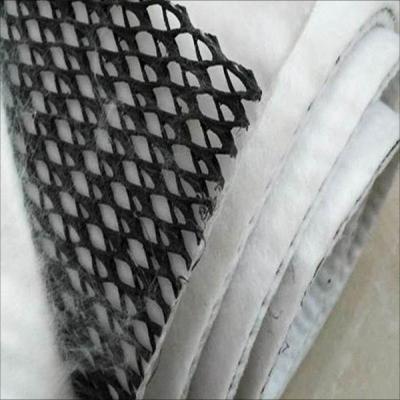In engineering, Composite drainage network It is an efficient drainage material with very good drainage performance, environmental protection, corrosion resistance and wear resistance. It is generally composed of multiple layers of materials, including drainage core layer, geotextile layer, etc. Its structural design is reasonable, which can promote the discharge of groundwater and prevent soil erosion and foundation settlement. However, in the actual construction process, the overlap width of the composite drainage network is very important, which can affect the drainage effect and engineering quality. Today, Xiaobian will talk about its overlap width in detail. Let’s take a look.

1. Definition of overlap width of composite drainage network
The overlapping width of the composite drainage net refers to the mutual weight of two or more composite drainage nets during laying Stack The width of. The setting of this parameter aims to ensure the continuity and integrity of the drainage channel, and avoid water seepage and water leakage problems caused by loose overlap. Reasonable overlap width can enhance the overall stability and drainage efficiency of the drainage net.
2. Factors affecting the width of overlap
1、Water quality: The quality of water can affect the blockage of the drainage network. In areas with poor water quality, such as water bodies containing a large amount of impurities such as sediment and suspended solids, a larger overlap width should be selected to increase the flow area of the drainage channel and reduce the risk of blockage.
2、Topography: The steepness of the terrain will also affect the choice of lap width. In areas with large slopes, the water flow speed is faster and the impact force is greater. Therefore, a larger overlap width should be selected to enhance the anti-erosion ability of the drainage network.
3、Rainfall: The amount of rainfall can be related to the drainage pressure of the drainage network. In areas with heavy rainfall, the drainage network has to bear greater water flow impact and drainage load, so a larger overlap width should also be selected to ensure smooth drainage.
4、Engineering requirements: Different engineering projects have different requirements for drainage networks. For example, in projects that require a high degree of ground hardening and large building height, a larger overlap width should be selected to enhance the bearing capacity and stability of the drainage network.

3. Principles for determining overlap width
1、Guaranteed drainage effect: The first principle of lap width is to ensure drainage effect. Through reasonable overlap width setting, the drainage channel is ensured to be continuous and unimpeded, and water seepage and leakage are avoided.
2、Enhance stability: The overlap width should also consider the stability of the drainage net. The larger overlap width can enhance the overall stability and erosion resistance of the drainage network, and improve the safety and durability of the project.
3、Economical and reasonable: On the premise of ensuring the drainage effect and stability, the selection of overlap width should also consider economic rationality. Avoid unnecessary waste and cost increase, and maximize project benefits.
4. Precautions in practical applications
1、Accurate measurement: Before construction, the site should be accurately measured to determine the laying position and overlap width of the drainage network. Avoid the problem of insufficient or excessive lap width caused by inaccurate measurement.
2、Standardized construction: During the construction process, operations should be carried out in strict accordance with the construction specifications to ensure the accuracy and consistency of the overlap width. It is also necessary to strengthen on-site management and supervision to ensure construction quality.
3、Regular inspection: After the drainage network is laid, regular inspection and maintenance work should be carried out to promptly discover and deal with water seepage, water leakage and other problems in overlapping parts to ensure the normal operation of the drainage system.
It can be seen from the above that the overlap width of the composite drainage network is one of the technical parameters to be paid attention to during the construction process. By setting the overlap width reasonably, the drainage effect can be ensured, the stability can be enhanced, and the project cost can be reduced. In practical application, the appropriate overlap width should be selected according to the specific engineering environment and requirements, and the construction management and maintenance should be strengthened to ensure the normal operation of drainage system and the reliability of engineering quality.
Post time: Mar-19-2025



